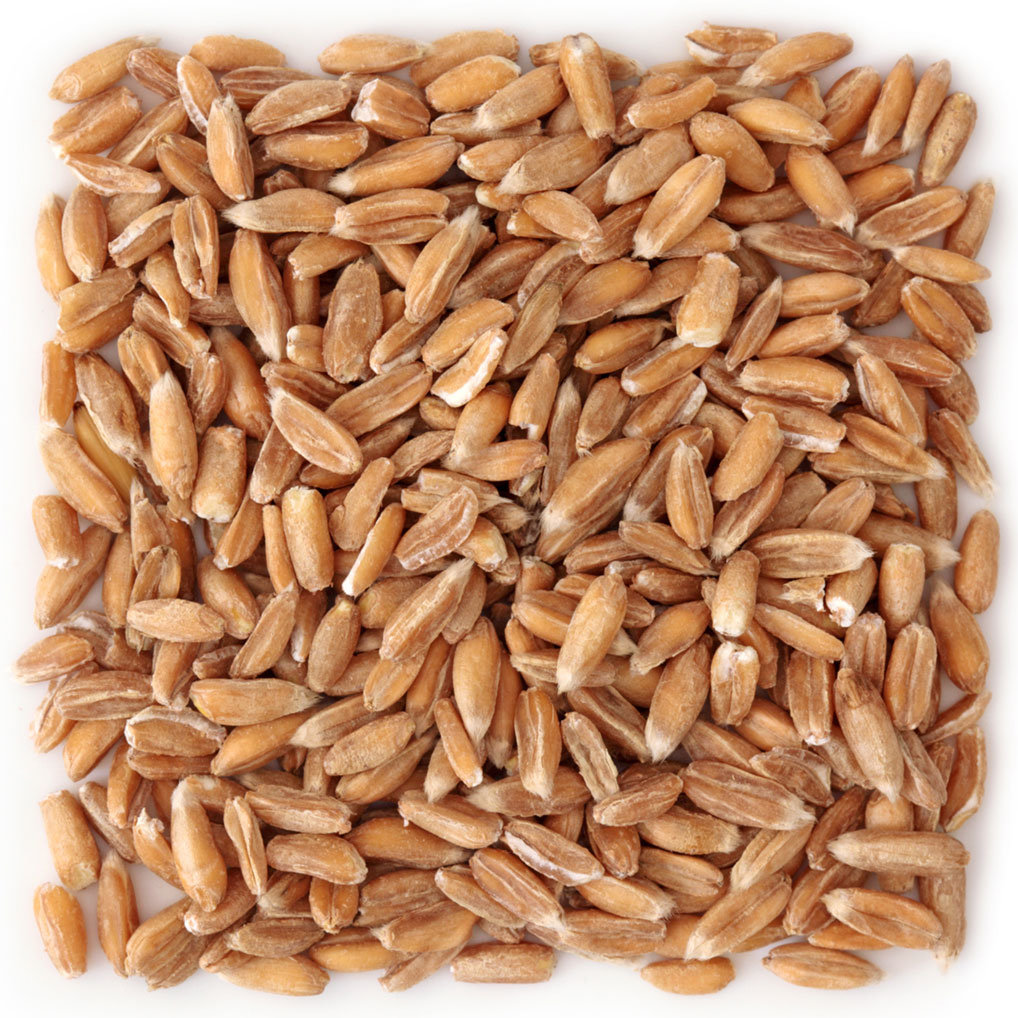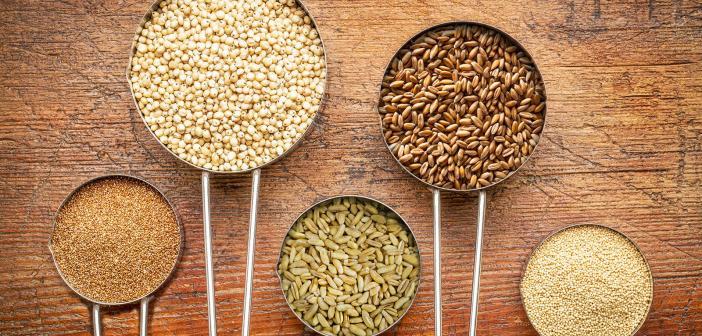Quinoa gained popularity because it contains nine of the essential amino acids needed for a healthy diet. It’s also gluten-free, which makes it a healthier alternative to wheat. But quinoa is not the only grain packed with nutrients. There are other super healthy grains out there that you might be missing out on.
What is quinoa anyway?

Quinoa seeds.
Quinoa (pronounced ‘KEEN-wa’) is not a grain, but actually a seed. Quinoa seeds come from the grain crop Chenopodium quinoa, which is native to the Andes region in South America. Popularly known today as a super-grain, quinoa was a staple in the ancient Incas’ diet.
Since its rise in popularity, quinoa has become part of the diet of many health-conscious eaters. The United Nations General Assembly even declared the year 2013 as the International Year of the Quinoa.
The unsung heroes of the superfoods world
Low in sodium and cholesterol, quinoa is the go-to food of those who are looking for a plant-based source of protein. One cup (185g) of quinoa contains 8g of protein and 5g of dietary fiber.
However, quinoa is not the only nutritional powerhouse among seeds and grains. There are other healthy grains that are not as popular as the favoured quinoa but are a lot healthier. Check out this chart for a quick nutritional comparison of healthy grains.
Nutrition facts per 1 cup of cooked grain
[table id=1 responsive=scroll /]
-
Amaranth
 Just like quinoa, amaranth is technically not a grain but a seed. It came from the Amaranthus plant, which is also grown for its leaf vegetables. Amaranth is a high-fiber food with plenty of phytonutrients to boot. A cup (246g) of amaranth seeds contains 9g of protein plus a number of vitamins and minerals. With its high antioxidant and anti-inflammatory properties, amaranth helps curb a number of health issues such as arthritis and gout. Additionally, it is high in dietary fiber (5g per cup), which helps eliminate bad cholesterol from the body.
Just like quinoa, amaranth is technically not a grain but a seed. It came from the Amaranthus plant, which is also grown for its leaf vegetables. Amaranth is a high-fiber food with plenty of phytonutrients to boot. A cup (246g) of amaranth seeds contains 9g of protein plus a number of vitamins and minerals. With its high antioxidant and anti-inflammatory properties, amaranth helps curb a number of health issues such as arthritis and gout. Additionally, it is high in dietary fiber (5g per cup), which helps eliminate bad cholesterol from the body.How to use: Grind the seeds to thicken soups and sauces. It can be used as a gluten-free alternative to flour. Amaranth is also great as an energy-building breakfast. Simmer ½ a cup of amaranth with 1½ cups of water or milk. Stir until the mixture thickens, then add on top of it your favorite fruits and nuts.
-
Kamut (Khorasan wheat)
 Kamut is a brand name for a type of wheat called Khorasan, which was rumored to be extinct. While kamut contains less gluten than the regular wheat, it does not make it a safe choice for people with gluten sensitivity. However, some people claim that gluten in kamut is tolerable, but this assertion requires thorough scientific research.
Kamut is a brand name for a type of wheat called Khorasan, which was rumored to be extinct. While kamut contains less gluten than the regular wheat, it does not make it a safe choice for people with gluten sensitivity. However, some people claim that gluten in kamut is tolerable, but this assertion requires thorough scientific research.Even though kamut is not exactly gluten-free, this grain is packed with fiber, proteins and minerals that the body needs for better health. A cup or 172g of kamut contains 11g of protein. Additionally, kamut contains 55 micrograms of selenium, an essential trace mineral that you can only get from food. Selenium helps prevent cell damage and protect the body from toxic heavy metals.
How to use: Kamut is an excellent high-protein alternative to oatmeal. The kernels can also be added to salads, stir-fries and soups for some extra crunch and texture.
-
Spelt
 Spelt (Triticum spelta) is one of the oldest grains in history, but people usually preferred other grains over it because of the hardness of its shell. In the 1980s, spelt found its way back to people’s homes thanks to the arrival of health food movements.
Spelt (Triticum spelta) is one of the oldest grains in history, but people usually preferred other grains over it because of the hardness of its shell. In the 1980s, spelt found its way back to people’s homes thanks to the arrival of health food movements.A subspecies of wheat, spelt offers more nutritional value than its relative. It has a high concentration of protein (one cup or 194g of cooked spelt will give you 11g of protein), plus, it is high in dietary fiber as well (8g per cup). Spelt is also a good source of iron and copper, which are good for blood circulation, and niacin, which is important in hormone regulation.
How to use: With its nutty flavor, spelt can be used as a gluten-free flour alternative. The great thing about spelt is that you don’t have to knead it as much as wheat. You can also cook it like a risotto or add it to salads for chewiness.
-
Teff
 Teff are tiny grains packed with tons of power. In 2014, this Ethiopian import was called the new quinoa for the high amount of nutrition it gives. Packed with 8 essential amino acids, teff is a great protein source for vegetarians and for athletes who need a boost in muscle recovery. Since teff is gluten-free, it’s safe for people suffering from celiac disease. It also has a low glycemic index, perfect for consumption by diabetics.
Teff are tiny grains packed with tons of power. In 2014, this Ethiopian import was called the new quinoa for the high amount of nutrition it gives. Packed with 8 essential amino acids, teff is a great protein source for vegetarians and for athletes who need a boost in muscle recovery. Since teff is gluten-free, it’s safe for people suffering from celiac disease. It also has a low glycemic index, perfect for consumption by diabetics.Moreover, people who are lactose intolerant need other sources of calcium, and teff may just be the perfect solution. One cup of teff contains half the amount of calcium found in 1 cup of cooked spinach.
How to use: Steam it, boil it, bake it, or eat it whole – teff is so versatile that you can do pretty much anything with it. You can use whole grains to thicken soups and stews. You can also add it to veggie burger patties to add more texture.
-
Sorghum
 It’s unfortunate that sorghum is overlooked by many western countries, as it is a nutrient powerhouse. In the United States, sorghum is mostly used as livestock feed. But this grain, which is grown in South Asia, Africa and Central America, packs a whopping 22g of protein per cup (192 grams). Perfect for human consumption!
It’s unfortunate that sorghum is overlooked by many western countries, as it is a nutrient powerhouse. In the United States, sorghum is mostly used as livestock feed. But this grain, which is grown in South Asia, Africa and Central America, packs a whopping 22g of protein per cup (192 grams). Perfect for human consumption!Additionally, a serving of cooked sorghum provides 47% of the recommended daily iron intake. It is also rich in antioxidants. In fact, study shows that sorghum bran packs more antioxidants than blueberries. Other studies show that this gluten-free grain can also inhibit cancer growth and protect people from diabetes.
How to use: Just like with the other grains, you can use sorghum in salads or as a replacement for couscous. You can also mill sorghum to make sorghum flour, which you can use in baking. Better yet, put it in a pot on the stovetop and pop it like popcorn.
Conclusion
Quinoa may have had the spotlight for being a superfood, but these five healthy grains pack more protein than the favored quinoa grain (seed). Diversify your diet by adding new grains to your kitchen repertoire. Who knows, you just might like them better than quinoa.
